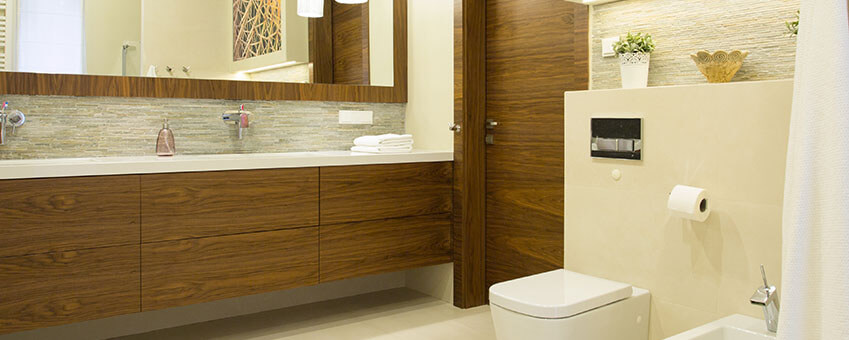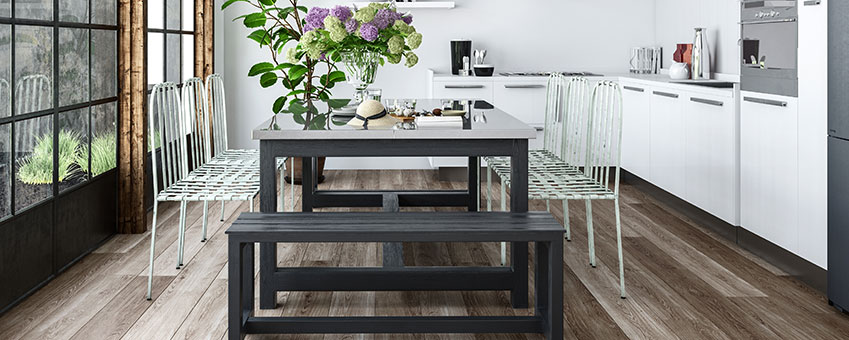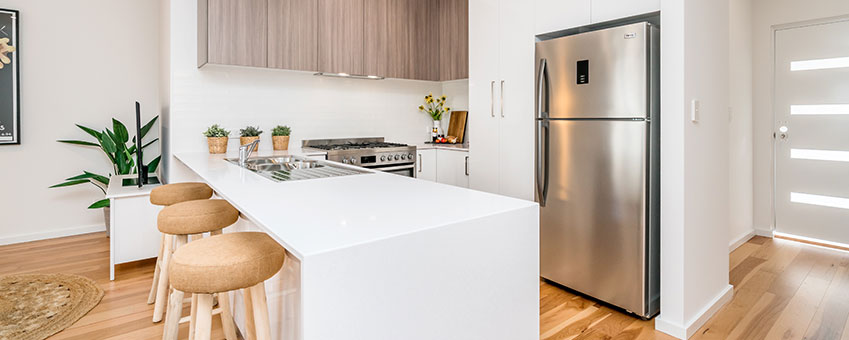Consider the idea of renovating your basement into a place full of books. Imagine a cozy spot where you can get lost in stories and learning. If that sounds good to you, then you’re in the right place. Here, we’ll share ten simple basement library ideas to create your dream reading space. Say goodbye to boring basements and get ready to create your own special reading space. Let’s dive in!
Classic Wood Paneling: A Timeless Touch of Elegance
Start your basement library transformation with classic wood paneling. Opt for rich mahoganies or oaks to create a warm and inviting atmosphere reminiscent of traditional libraries. The timeless appeal of wood paneling sets the stage for an immersive reading experience that combines elegance with comfort. To begin, measure the walls of your basement and choose the appropriate type and quantity of wood paneling. Consider hiring a professional carpenter for precise installation, ensuring a flawless finish that enhances the overall aesthetic of your library.
Open Shelving: Wall-to-Wall Book Bliss
Maximize your book storage with wall-to-wall open shelving. Showcase your literary treasures while creating a classic library ambiance. Begin by assessing the layout of your basement and determining the optimal placement for your shelves. Consider factors such as ceiling height, wall space, and accessibility when designing your shelving system. Once you have a plan in place, select high-quality shelving materials that complement the style of your library. Whether you prefer sleek metal shelves or rustic wooden ones, choose options that enhance the overall aesthetic of your space. Finally, arrange your books in a visually appealing manner, grouping them by genre, author, or theme for easy access and a cohesive look.
Comfortable Seating: Where Reading Dreams Take Flight
No basement library is complete without comfortable seating options. Mix and match leather armchairs, bean bags, and plush sofas to create a cozy reading nook that invites you to dive into your favorite books. Begin by assessing the layout of your basement and determining the optimal placement for your seating area. Consider factors such as natural light, proximity to bookshelves, and traffic flow when designing your reading nook. Once you have a plan in place, select furniture pieces that are both stylish and comfortable, ensuring hours of reading enjoyment. Don’t forget to add soft throw pillows and blankets for an extra layer of coziness, creating a space where reading dreams take flight.
Lighting: Layered Illumination for Ambiance
Basements often lack natural light, so it’s essential to create a well-lit environment for your basement library. Combine ambient lighting with task lighting to enhance the cozy ambiance and make your reading nook irresistible. Begin by assessing the existing lighting fixtures in your basement and determining if any upgrades or additions are needed. Consider installing recessed lighting for overall illumination, supplemented by table lamps or floor lamps for task lighting. Additionally, incorporate accent lighting such as wall sconces or picture lights to highlight artwork or architectural features. By layering different types of lighting, you can create a warm and inviting atmosphere that enhances the reading experience.
Rug/Carpet: Adding Warmth and Acoustic Comfort
Enhance the coziness of your basement library with large area rugs or wall-to-wall carpeting. Not only do rugs add warmth underfoot, but they also help dampen sound, creating a serene environment for quiet contemplation and reading. Begin by measuring the dimensions of your basement and selecting the appropriate size and style of rug or carpet. Consider factors such as color, pattern, and texture when choosing your flooring option, aiming for a look that complements the overall aesthetic of your library. Once you have selected your rug or carpet, position it strategically within your space, anchoring your seating area and adding visual interest to the room. Finally, add a rug pad underneath for extra cushioning and grip, ensuring a comfortable and safe environment for reading and relaxation.
Basement Library Fireplace: A Cozy Addition if Budget Allows
If your budget permits and your basement’s structural integrity allows, consider adding a fireplace to your library. Beyond providing warmth, a fireplace infuses the space with ambiance and comfort, making your reading sessions even more delightful. Begin by consulting with a professional contractor or fireplace specialist to assess the feasibility of adding a fireplace to your basement. Consider factors such as ventilation, fuel type, and safety regulations when selecting the right fireplace option for your space. Whether you choose a traditional wood-burning fireplace or a modern gas insert, ensure that it complements the overall design of your library and meets your heating needs. Finally, complete the look with a stylish mantel and cozy seating arrangement, creating a focal point that invites relaxation and conversation.
Lounge Area: Sip Coffee, Relax, and Converse
Create a separate lounge area within your basement library for relaxing, sipping coffee, and enjoying conversations with fellow book lovers. With a comfy sofa and a coffee table, this zone becomes a social hub where shared literary experiences come to life. Begin by assessing the layout of your basement and determining the optimal placement for your lounge area. Consider factors such as traffic flow, proximity to bookshelves, and natural light when designing your space. Once you have a plan in place, select furniture pieces that encourage relaxation and socializing, such as plush sofas, armchairs, and ottomans. Add a coffee table for drinks and snacks, as well as side tables for books and decor. Finally, personalize your lounge area with throw pillows, blankets, and artwork, creating a cozy and inviting space for reading and conversation.
Study Desk: A Nook for Work and Reflection
Include a dedicated study desk in your basement library for moments when you want to delve into work or deep contemplation. Furnish it with a comfortable chair and ample lighting, ensuring a quiet nook for focused reading or reflection. Begin by assessing the layout of your basement and determining the optimal placement for your study desk. Consider factors such as natural light, proximity to bookshelves, and privacy when designing your workspace. Once you have a plan in place, select a desk that fits your needs and complements the overall aesthetic of your library. Choose a comfortable chair with proper ergonomic support, ensuring hours of productivity and comfort. Finally, personalize your study desk with organizational accessories, decor, and personal touches that inspire creativity and reflection.
Artwork and Decor: Personalize Your Literary Space
Infuse your basement library with personality by decorating it with framed artwork, vintage maps, or literary prints. Display personal collections or antiques that reflect your interests and passions, adding a unique touch to your space. Begin by assessing the walls of your basement and determining the optimal placement for artwork and decor. Consider factors such as scale, proportion, and visual balance when arranging your pieces, aiming for a cohesive and harmonious look. Once you have a plan in place, select artwork and decor that resonates with your personal style and complements the overall aesthetic of your library. Whether you prefer classic paintings, modern prints, or vintage posters, choose pieces that inspire and delight, creating a space that reflects your love of literature and art.
Color Scheme: Setting the Literary Mood
Choose a color palette that sets the mood for your basement library. Whether you prefer warm, deep tones for a cozy atmosphere or lighter hues for an airy feel, your color scheme should reflect the ambiance you want to create. Begin by considering the existing decor and architectural features of your basement, such as flooring, walls, and trim. Identify key colors and textures that you want to highlight or complement, creating a cohesive and harmonious look. Once you have a color palette in mind, select paint colors, fabrics, and decor accents that bring your vision to life. Experiment with different combinations until you find the perfect balance of color and texture, creating a space that feels inviting, comfortable, and inspiring.
Wrapping Up: Your Basement Library Ideas Conclusion
Congratulations! You’ve embarked on a journey to transform your basement into a captivating literary sanctuary. With these ten basement library ideas as your guide, you’re well-equipped to create a space that celebrates your love for literature while infusing artistic charm into every corner. Whether you’re curling up with a classic novel, hosting book club meetings, or simply escaping into the world of words, your basement library is sure to become your favorite room in the house.
Now it’s your turn to bring these ideas to life! We’d love to hear about your basement library transformation and see photos of your cozy reading nook. Share your journey with us on Instagram using #VKBBasementLibrary and join our vibrant community of home design enthusiasts. Together, let’s inspire and support each other as we create spaces that reflect our passions and personalities. Happy reading in your newly remodeled basement!
FAQ: Basement Library Ideas
1. How do I start transforming my basement into a library?
To begin transforming your basement into a library, start by assessing the space and determining your vision. Consider factors such as lighting, seating, and storage options. Then, select a theme or design concept that reflects your personal style and preferences.
2. What are some budget-friendly ways to create a basement library?
There are several budget-friendly ways to create a basement library. You can start by repurposing existing furniture and decor items, such as bookshelves and seating. Consider shopping at thrift stores or online marketplaces for affordable furniture and accessories. Additionally, DIY projects, such as painting walls or upcycling furniture, can help save money while adding a personal touch to your library.
3. How can I maximize book storage in my basement library?
To maximize book storage in your basement library, consider using wall-to-wall open shelving. This not only provides ample space for your book collection but also adds visual interest to the room. You can also utilize vertical space by installing floor-to-ceiling bookshelves or incorporating under-the-stairs storage solutions.
4. What lighting options are best for a basement library?
For a basement library, it’s essential to have a combination of ambient, task, and accent lighting. Ambient lighting, such as recessed lights or pendant fixtures, provides overall illumination. Task lighting, such as table lamps or floor lamps, is ideal for reading areas. Accent lighting, such as wall sconces or picture lights, can highlight artwork or architectural features.
5. How can I make my basement library cozy and inviting?
To make your basement library cozy and inviting, focus on incorporating comfortable seating, soft textiles, and warm lighting. Add plush sofas, bean bags, or armchairs for lounging and reading. Layer rugs or carpeting for warmth and acoustic comfort. Incorporate soft throw pillows, blankets, and curtains to add texture and warmth to the space.
6. What are some tips for adding personal touches to my basement library?
Adding personal touches to your basement library can help make it feel like a unique and inviting space. Consider displaying framed artwork, family photos, or cherished mementos that reflect your interests and personality. You can also incorporate decorative accents such as candles, plants, or decorative objects that resonate with your style.
7. How can I create a functional study area within my basement library?
To create a functional study area within your basement library, designate a specific area for a desk and chair. Ensure the space is well-lit with task lighting and has access to power outlets for electronic devices. Organize your desk with storage solutions such as shelves, drawers, or file cabinets to keep supplies and paperwork organized and accessible.
8. What color scheme is best for a basement library?
The best color scheme for a basement library depends on your personal preferences and the mood you want to create. Warm, deep tones such as rich browns, burgundies, or deep greens can create a cozy and inviting atmosphere. Lighter hues such as soft blues, greens, or neutrals can make the space feel brighter and more airy. Consider incorporating accent colors or textures to add visual interest and depth to the room.



